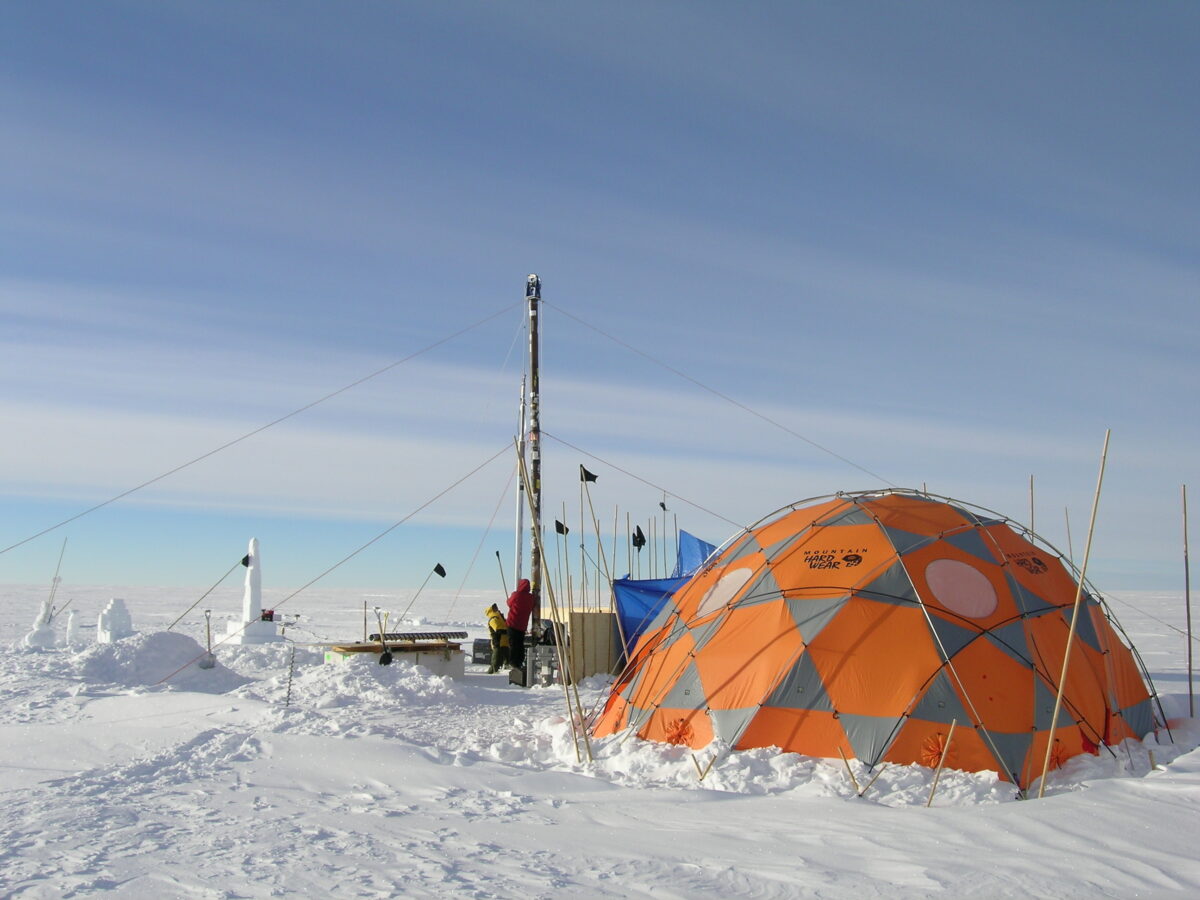Carbonyl sulfide is the most abundant sulfur gas in the lower atmosphere. It’s a greenhouse gas, and it contributes to the formation of stratospheric aerosols. Most carbonyl sulfide stems from sulfur gas emissions from the ocean, with smaller emissions from biomass burning, wetlands, and volcanic activity. In the modern era, carbonyl sulfide is produced during fiber manufacturing.
Carbonyl sulfide also has varied sinks, but the largest and most important is uptake by terrestrial plants during photosynthesis. Using ice cores collected from five locations around Antarctica, Aydin et al. have produced a record of atmospheric carbonyl sulfide that goes back 8,000 years. They suggest that this record may track long-term changes in the productivity of land plants.
The ice cores used come from Antarctica’s Byrd, Siple Dome, Taylor Dome, West Antarctic Ice Sheet Divide, and South Pole drill sites. Measuring the concentration of carbonyl sulfide in air extracted from the core samples, the authors found that these five different sites generally agree for the past 1,000 years. Looking further back, however, the carbonyl sulfide records begin to diverge.
Because the same carbonyl sulfide concentration should be recorded at all sites, the authors suggest that the levels preserved in the ice core air have evolved over time, being destroyed by a slow temperature-dependent hydrolysis reaction. Using an ice flow model and a heat flux model, the authors estimated the temperature histories for the different core sites and accounted for the carbonyl sulfide loss to hydrolysis at each site for every core sample.
After applying this correction, the adjusted records converged, displaying a decrease in atmospheric carbonyl sulfide from around 300 parts per trillion 7,000 years ago to around 250 parts per trillion 5,000 years ago. Carbonyl sulfide levels increased in later years, reaching 330 to 350 parts per trillion around 1,000 years ago. Since the dawn of the industrial era, carbonyl sulfide concentrations have increased again, now measuring close to 500 parts per trillion. (Journal of Geophysical Research: Atmospheres, doi:10.1002/2014JD021618, 2014)
—Colin Schultz, Writer
Citation: Schultz, C. (2014), Atmospheric carbonyl sulfide hit a minimum 5,000 years ago, Eos, 95, doi:10.1029/2014EO021377. Published on 31 December 2014.
Text © 2014. The authors. CC BY-NC 3.0
Except where otherwise noted, images are subject to copyright. Any reuse without express permission from the copyright owner is prohibited.

